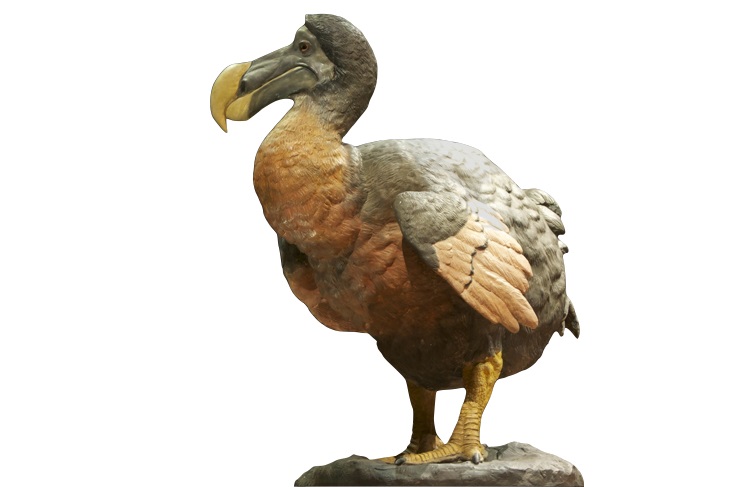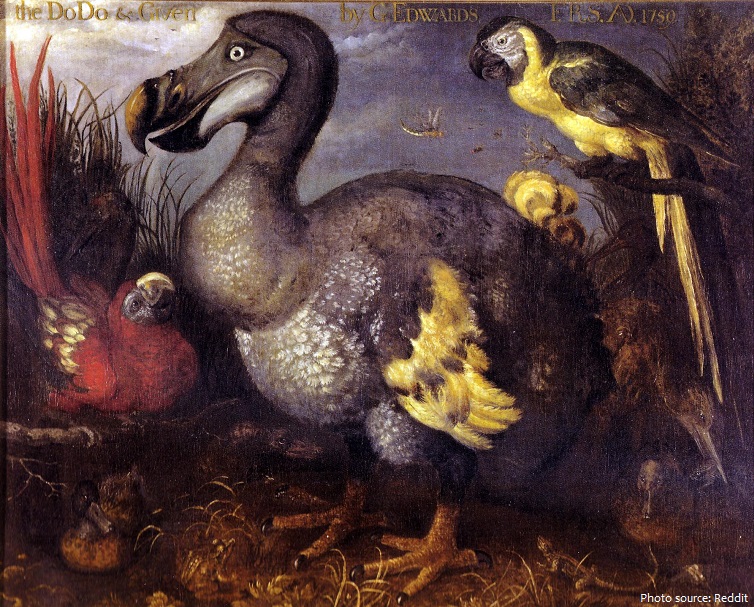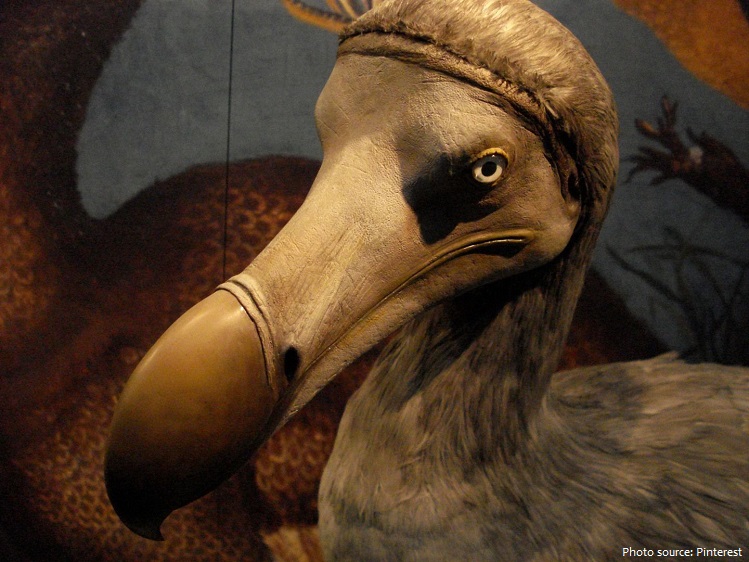The dodo is an extinct species of flightless bird from Mauritius.
Extinction is a natural part of the history of life, and some researchers speculate that natural causes provided the tipping point for the dodo’s extinction. However, human activities also played
a role, particularly through the introduction of new species to the island, habitat destruction, and overhunting.
Although many pictures and stories place the dodo along the shores of Mauritius, it was actually a forest-dwelling bird. The island of Mauritius is home to a variety of biomes, such as plains, small mountains, forests, and reefs all along the shores. However, the dodo made its home primarily in the forest.
Though the dodo has historically been considered fat and clumsy, it is now thought to have been well-adapted for its ecosystem.
Subfossil remains show the dodo was about 1 metre (3 ft 3 in) tall and may have weighed from 10.6 to 17.5 kg (23 to 39 lb) in the wild.
Based on weight estimates, it has been suggested the male could reach the age of 21, and the female 17.
The dodo’s appearance in life is evidenced only by drawings, paintings, and written accounts from the 17th century. As these vary considerably, and only some of the illustrations are known to have been drawn from live specimens, its exact appearance in life remains unresolved, and little is known about its behaviour.
It has been depicted with brownish-grey plumage, yellow feet, a tuft of tail feathers, a grey, naked head, and a black, yellow, and green beak.
In addition to fallen fruits, the dodo probably subsisted on nuts, seeds, bulbs, and roots. It has also been suggested that the dodo might have eaten crabs and shellfish, like their relatives the crowned pigeons. The dodo used gizzard stones to help digest its food.
It is presumed that the dodo became flightless because of the ready availability of abundant food sources and a relative absence of predators on Mauritius.
Specifics about mating and incubation periods are not known. Several people have described the nests the dodo made as being deep in the forest, in a bed of grass. There, the female would lay one egg, which she would protect and raise. One sailor told about hearing the cries of a young dodo in its nest, which sounded “like that of a young goose.”
Mauritius had been visited by Arab vessels in the Middle Ages and Portuguese ships between 1507 and 1513, but was settled by neither. No records of dodos by these are known, although the Portuguese name for Mauritius, “Cerne (swan) Island”, may have been a reference to dodos.
The first recorded mention of the dodo was by Dutch sailors in 1598.
In the following years, the bird was hunted by sailors and invasive species, while its habitat was being destroyed.
The last widely accepted sighting of a dodo was in 1662.
Its extinction was not immediately noticed, and some considered it to be a myth. In the 19th century, research was conducted on a small quantity of remains of four specimens that had been brought to Europe in the early 17th century.
All that remains of the dodo is a head and foot at Oxford, a foot in the British Museum, a head in Copenhagen, and skeletons, more or less complete, in various museums of Europe, the United States, and Mauritius. Many bones of solitaires have also been preserved.
The Dodo has become a symbol of extinction caused by the arrival of humans in ecosystems where humans had never before lived.
The etymology of the word dodo is unclear. Some ascribe it to the Dutch word dodoor for “sluggard”, but it is more probably related to Dodaars, which means either “fat-arse” or “knot-arse”, referring to the knot of feathers on the hind end.
The dodo was variously declared a small ostrich, a rail, an albatross, or a vulture, by early scientists.
Like many animals that evolved in isolation from significant predators, the dodo was entirely fearless of humans.
The sailors who landed on Mauritius found much amusement in watching the clumsy dodo’s behavior.
The dodo appears frequently in works of popular fiction, and even before its extinction, it was featured in European literature, as symbol for exotic lands, and of gluttony, due to its apparent fatness.
In 1865, the same year that George Clark started to publish reports about excavated dodo fossils, the newly vindicated bird was featured as a character in Lewis Carroll’s Alice’s Adventures in Wonderland. It is thought that he included the dodo because he identified with it and had adopted the name as a nickname for himself because of his stammer, which made him accidentally introduce himself as “Do-do-dodgson”, his legal surname. Carroll and the girl who served as inspiration for Alice, Alice Liddell, had enjoyed visiting the Oxford museum to see the dodo remains there. The book’s popularity made the dodo a well-known icon of extinction.





